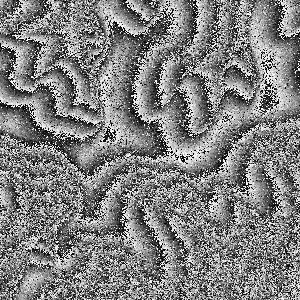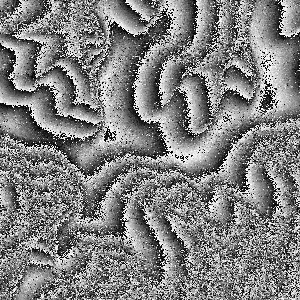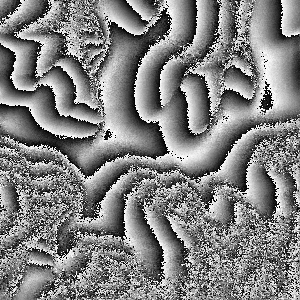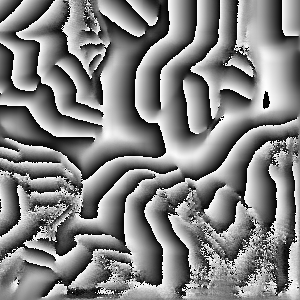
The original phase

Filtered by 1.3

Filtered by 1.7

Filtered by 3.0 (too much)
Phase_filter can filter out some noise from a phase image of an interferogram. The filtering technique used is Goldstein filtering.
This technique works by FFT'ing small pieces of the input phase image, exponentiating the frequency-domain result, then inverse-FFT'ing the phase back. The exponent used is passed in on the command line.
The reason the technique works is that the "signal" in a phase image usually looks like a line frequency component; while the "noise" is spectrally uniform. Thus, when you exponentiate the spectrum the big (signal) components get bigger; while the small (noise) components get smaller. Essentially, you've preferentially amplified the signal at the expense of the noise.
An exponent of 1.0 does nothing to the image; exponents of 1.4 to 1.8 work well to smooth phase without much distortion; exponents over 2.0 usually result in too much smoothing-- the phase is very geometric. Nicely, no matter the exponent, phase_filter will leave a totally incoherent region alone. This ensures that lakes and decorrelated hillsides will stay decorrelated, and will hence not mislead a phase unwrapping program.
 The original phase |
 Filtered by 1.3 |
 Filtered by 1.7 |
 Filtered by 3.0 (too much) |
Phase_filter is usually called by tandem_ifm, but can be run alone.
Back to main interferometry page.
Last Updated: September 1, 1998
If you have any questions, please feel free to email olawlor@acm.org